Table Of Contents
What is Zephyr?
Zephyr is a test management tool designed to help QA teams plan, create, execute, and track their test cycles efficiently. It’s available as a standalone solution and also integrates seamlessly with Jira, making it a top choice for Agile and DevOps teams.
In simple terms, Zephyr provides a centralized space to manage manual and automated tests, link them to user stories, and monitor testing progress in real time. One of its biggest advantages is its native Jira integration, which allows testers, developers, and product managers to collaborate within the same ecosystem, thereby reducing the need for external tracking tools.
Zephyr offers multiple versions, including Zephyr Squad, Zephyr Scale, and Zephyr Enterprise, catering to teams of different sizes and complexities.
- Zephyr Squad: Best for small to mid-sized Agile teams inside Jira.
- Zephyr Scale: Offers more advanced test planning, reusability, and reporting.
- Zephyr Enterprise: A full-fledged, standalone solution for large-scale organizations.
Explore all Zephyr Alternatives!
Features of Zephyr
Here are some of the core features that make Zephyr a widely adopted test management tool:
- Test Planning and Organization
Create test cycles, plan execution schedules, and track testing progress in one place.
- End-to-End Traceability
Link test cases to user stories, requirements, and defects for complete visibility across the SDLC.
- Seamless Jira Integration
Zephyr works directly within Jira, allowing QA teams to manage all test artifacts without switching tools.
- Customizable Dashboards and Reports
View real-time test metrics through visual dashboards. Customize reports to track coverage, progress, and quality trends.
- Automation Integration
Integrates with popular automation tools like Selenium, Jenkins, and Bamboo, letting teams combine manual and automated testing efforts.
- Reusable Test Assets
Easily reuse test cases across multiple projects to save time and ensure consistency.
- Collaborative Workflows
Allow testers, developers, and project managers to collaborate efficiently using comments, notifications, and shared views.
- Test Execution and Result Tracking
Execute test cases manually or automatically and log results directly within the tool for accurate progress tracking.
Advantages of Zephyr
Zephyr offers several competitive benefits that make it a strong contender in the test management space:
- Native Jira Experience
Ideal for Jira users. Zephyr’s seamless integration means testing feels like a natural extension of your development workflow.
- Scalability
Supports small Agile teams to enterprise-level organizations with flexible deployment options.
- Real-Time Insights
Visual dashboards provide instant visibility into test coverage, execution rates, and defect trends.
- Easy Collaboration
Developers and testers can work in the same environment, improving communication and reducing delays.
- Automation-Ready
Integration with CI/CD pipelines and automation frameworks ensures faster release cycles.
- User-Friendly Interface
Its intuitive, Jira-like UI makes it easy for new users to get started quickly without extensive training.
Limitations of Zephyr
While Zephyr is powerful, it has some limitations that make users explore alternative tools:
- Complex Setup for Large Projects
Managing extensive test repositories or configurations can become challenging without proper organization.
- Performance Lag in Jira
Some users report slow performance when working with large test sets inside Jira.
- Limited Reporting Customization in Lower Tiers
Advanced analytics and report customization are more accessible in Zephyr Scale and Enterprise editions.
- Steeper Learning Curve for Non-Jira Users
Teams not already familiar with Jira may find the navigation and setup slightly complex.
- Cost Factor
Pricing can be higher compared to some lightweight or open-source test management tools, especially for large teams.
How to Create and Manage Test Cases in Zephyr
Managing test cases in Zephyr is a structured process that helps your QA team stay organised and traceable. Below is a step-by-step guide covering how to create new test cases, organise them, and manage execution and traceability.
Step 1: Create a New Test Case
- Open your project in Zephyr.
- In the Folders (or Library) panel, either click New Folder and name it, or select an existing folder where you wish to add a test case.
- Click + New Test Case.
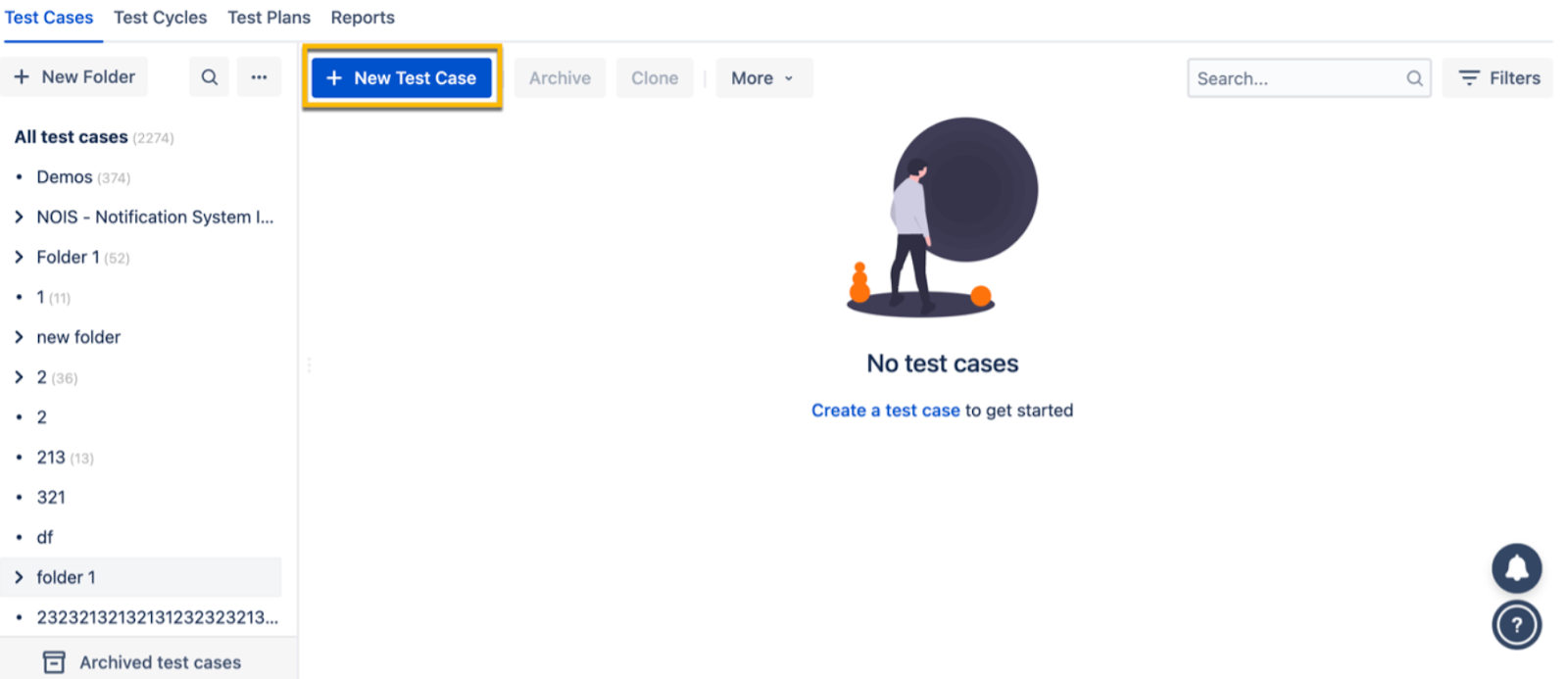
- In the modal/pop-up:
- Enter a Name (mandatory) and optionally fill in other fields like Status, Priority, Labels, Folder, etc.
- You can choose to Create, Create and Edit, or Create and Record (if you have automation-ready recording enabled).
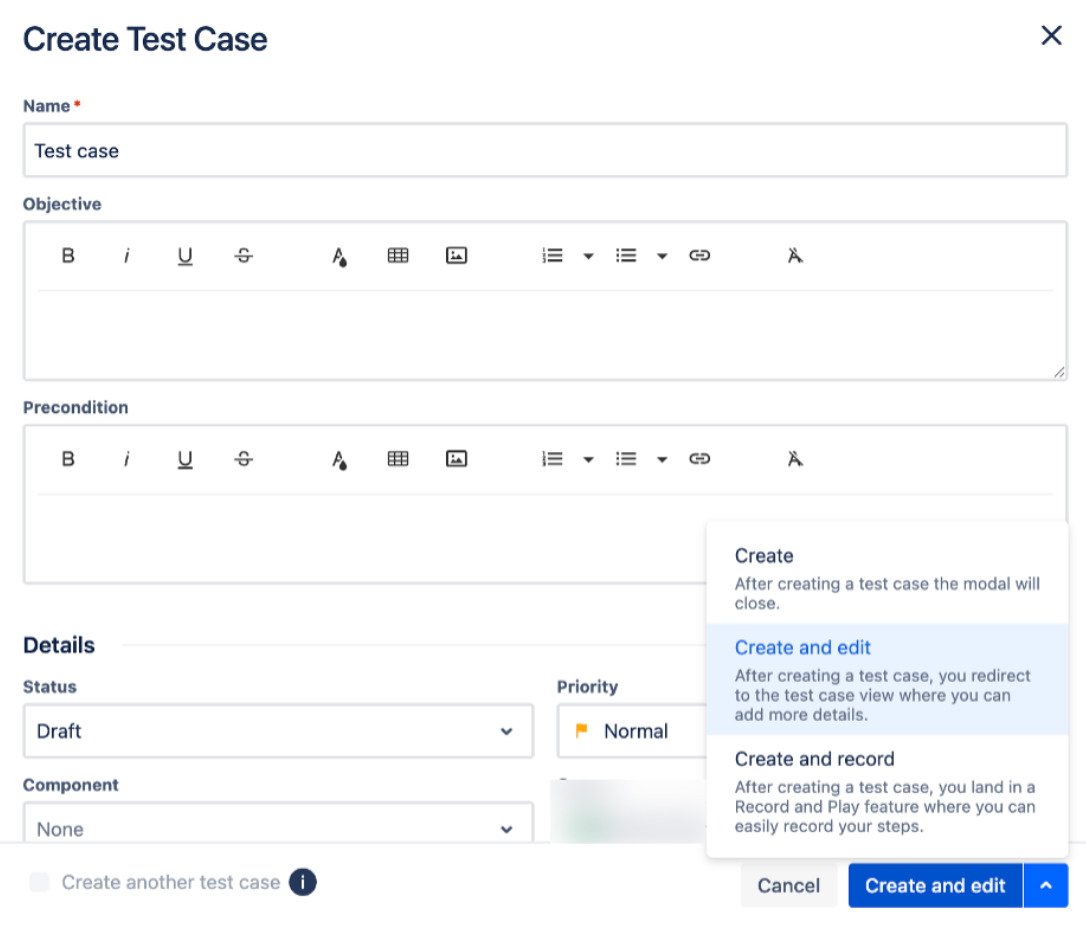
- Navigate to the Test Script tab to add and reorder steps. Here, you define each step, expected result, pre-conditions, and attachments if needed.

- Use other tabs for additional context:
- Traceability: Link the test case to issues (e.g., requirements/user stories)
- Execution: View previous run results.
- History: See changes made to the test case.
Step 2: Organise Test Cases and Test Cycles
- Group your test cases into logical folders or suites so they’re easy to find and reuse.
- Create Test Plans to define scope, objectives, resources, and schedules.
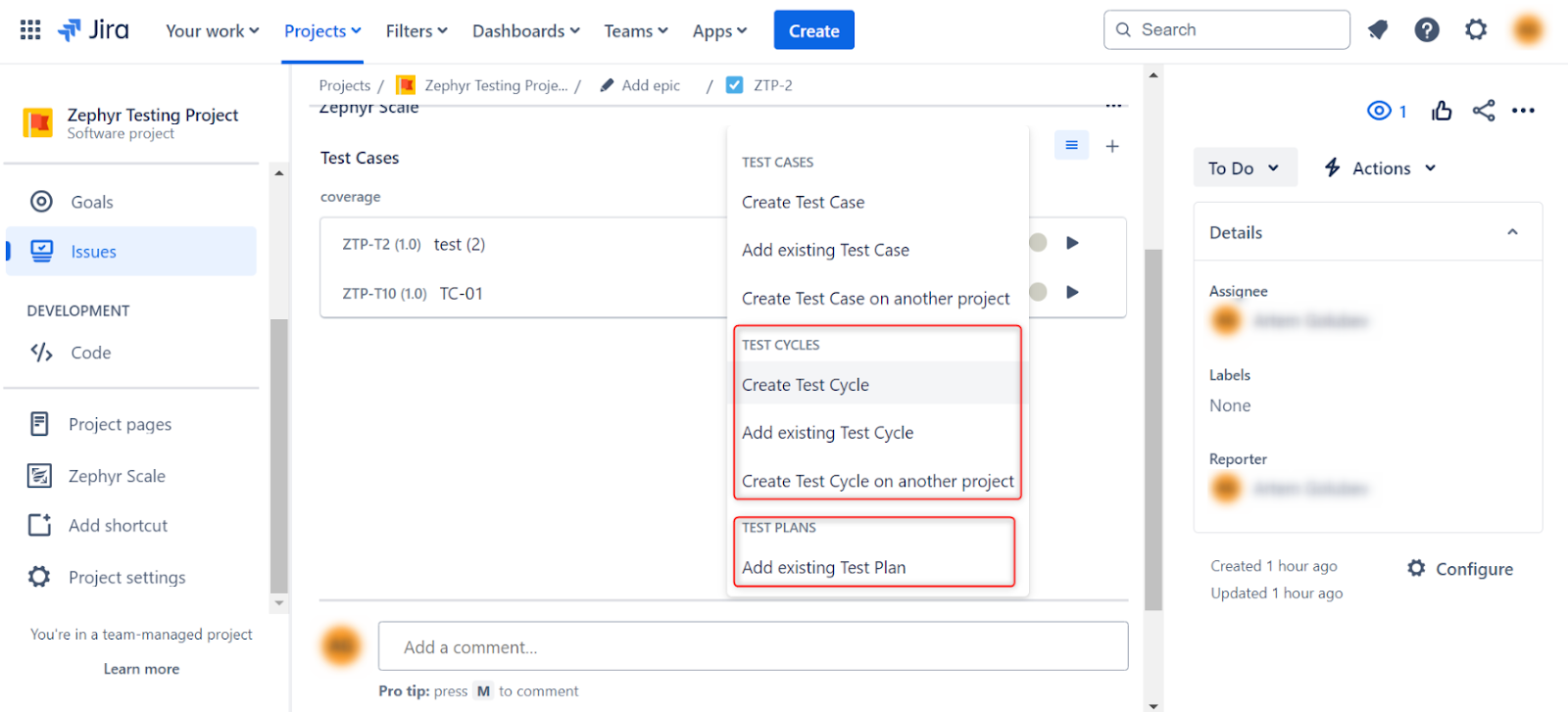
- Create Test Cycles (within or linked to Test Plans) and assign test cases to those cycles for execution.
- Link test cases to requirements or user stories (for traceability) and defects (for coverage and accountability).
Step 3: Execute and Track Your Tests
- Once test cases are within cycles, assign them to testers, set execution status (e.g., Pass, Fail, Blocked).
- For automated tests, Zephyr supports automation integration (e.g., test frameworks, CI/CD).
- Use real-time dashboards and custom reports to track execution progress, coverage, and identify bottlenecks.
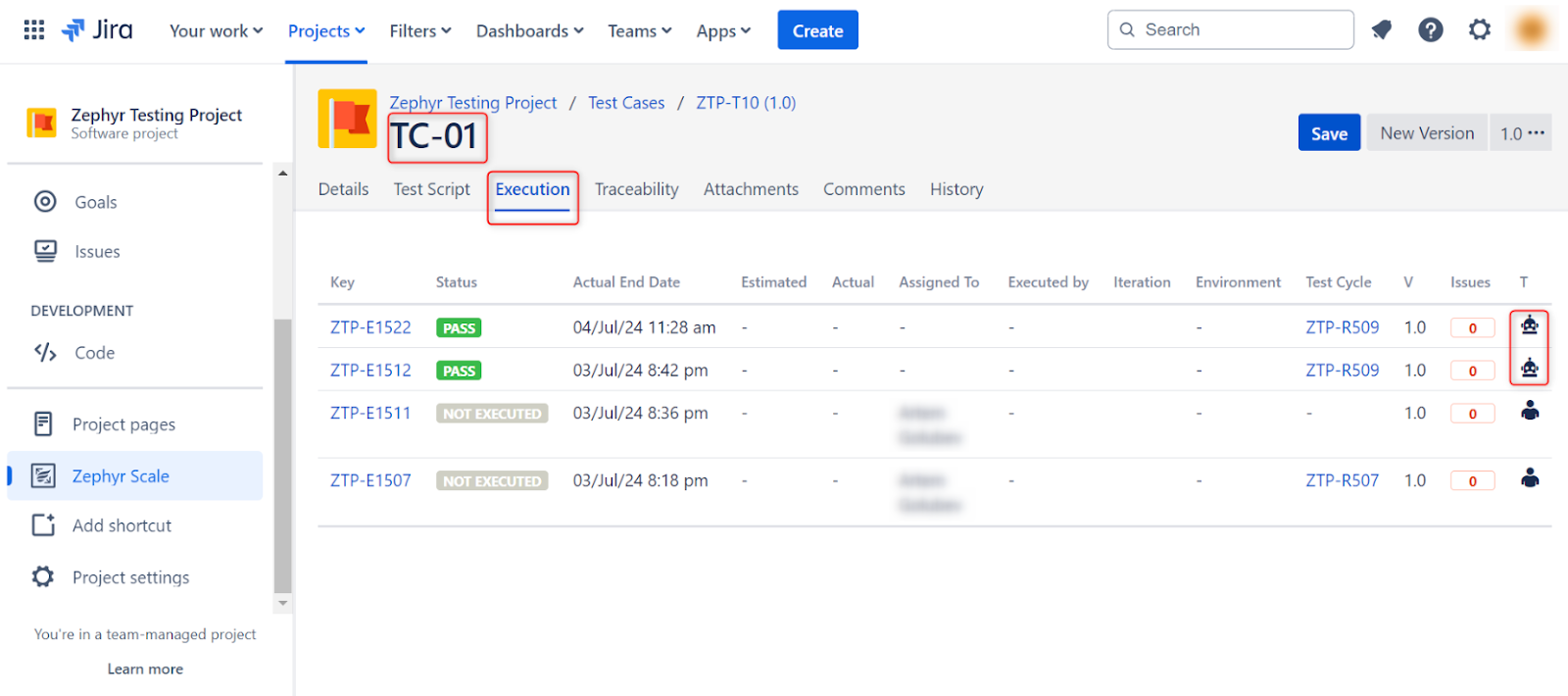
Step 4: Maintain and Reuse Test Cases
- Make use of test case re-usability: reuse test cases across projects and cycles to save effort.
- Version control: track changes to test cases, revert if needed.
- Archive or clean up outdated test cases to keep your repository lean and manageable.
What Test Management by Testsigma Adds That Zephyr Doesn’t Have
- AI-Driven Agents for End-to-End Testing Tasks
Test Management by Testsigma utilizes specialized AI agents to automate core QA activities, including generating test cases, planning sprints, executing tests, and even writing bug reports.
- Automatic Test Case Generation from Diverse Sources
The Generator Agent can create test cases from Jira stories, Figma designs, videos, images, or even user journey flows and complete them with steps, edge-case coverage, pre-conditions, and expected outcomes. Zephyr, by contrast, is more focused on manual or scripted test case creation, without a native “generate from design or video” AI-agent layer.
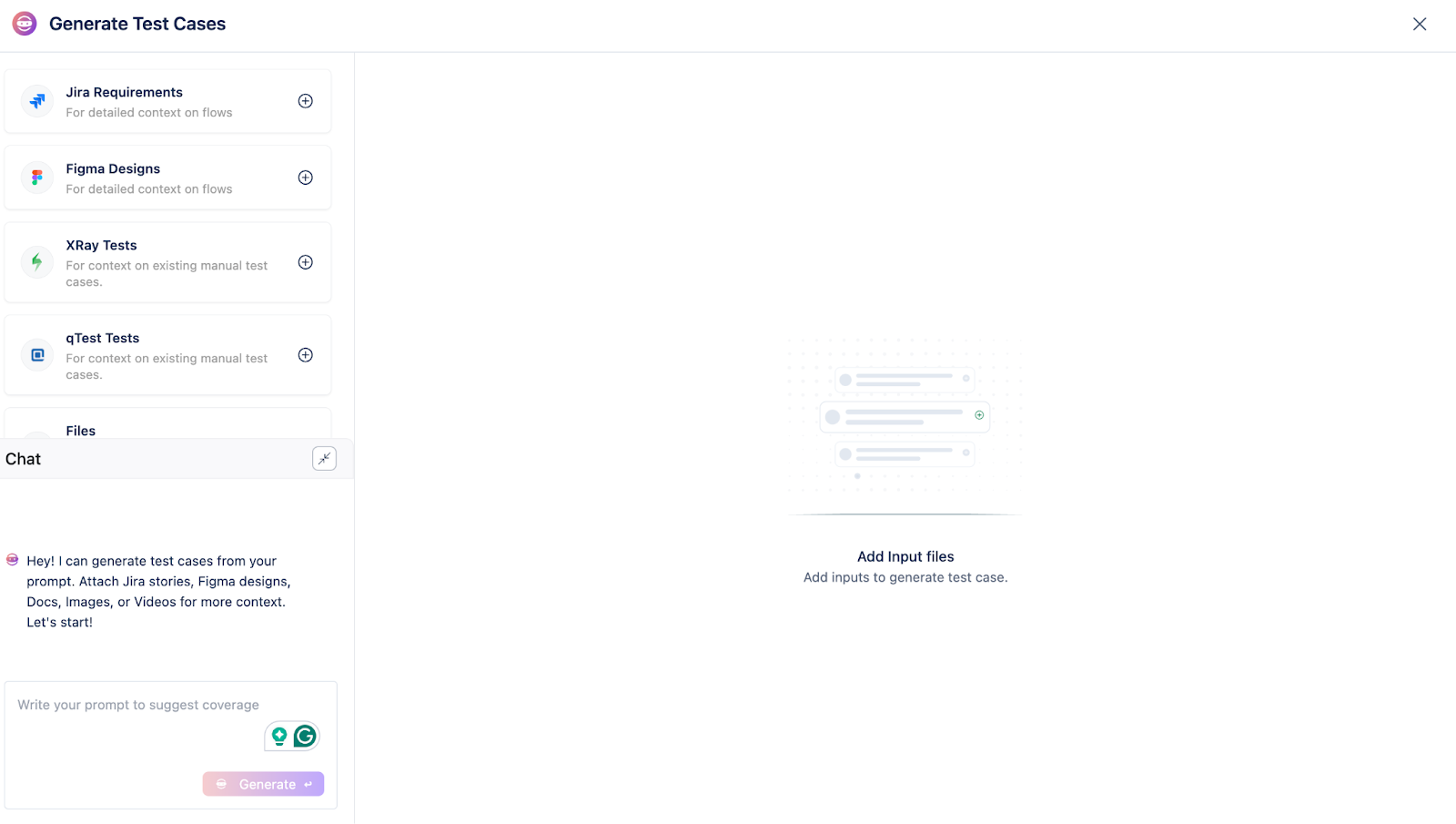
- Autonomous Test Execution
Test Management by Testsigma’s Runner Agent can execute tests in-browser automatically, with real-time feedback and human-in-the-loop control (pause, rerun, tweak). This reduces the manual overhead in execution, especially for regression or sanity testing.
- Self-Reporting Bug Creation
When a test fails, Test Management by Testsigma’s Bug Reporter Agent can automatically generate a detailed bug report (with steps, screenshots, logs) and create or update the bug in Jira (or other trackers) via two-way Jira sync. While Zephyr supports defect tracking and issue linking, it doesn’t promote a full AI-powered, autonomous bug-reporting agent.
- Proactive Test Planning
The Sprint Planner Agent in Test Management by Testsigma detects when a Jira sprint starts and triggers test planning automatically, aligning QA planning with development from day zero. This helps reduce lag between story creation and testing preparation.
- Self-Healing & Maintenance via AI
Test Management by Testsigma’s AI agents (like the Maintenance Agent) can update or repair test scripts when the application under test changes, reducing manual maintenance. Zephyr does not natively offer this kind of autonomous healing in its traditional test-management workflow.
- Low Learning Curve & Modern Pricing Structure
Test Management by Testsigma has a minimal learning curve compared to Zephyr. The core features are free forever, and advanced features come at flexible pricing.
Why This Matters?
- For teams that want to minimize manual effort in test creation, execution, and bug reporting, Test Management by Testsigma’s AI agents can significantly accelerate QA cycles.
- In contrast, Zephyr is strong in being deeply embedded in Jira and providing test-management workflows, but may require more manual input for test design and maintenance.
- If your team values “set it up once and let it run,” Test Management by Testsigma adds a modern AI-driven layer, whereas Zephyr is perhaps better suited for teams that want more control and are already comfortable with manual test management and Jira workflows.
Conclusion
Zephyr remains one of the most trusted test management tools for Agile and DevOps teams, especially those using Jira. With its scalable structure, native integration, and real-time insights, it simplifies quality tracking and helps teams ship faster with confidence. However, if your needs lean toward no-code automation, advanced analytics, or improved performance at scale, it’s worth comparing Zephyr with other modern test management tools, such as Test Management by Testsigma, before making a decision.


